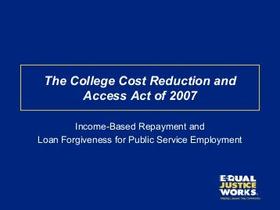Introduction
As the job market evolves rapidly, choosing a community college with the right career path in mind has never been more important. For students, parents, and educators, seeking the best-fitting institution means aligning program offerings, local employer demand, affordability and transfer opportunities. In this article, we examine how to identify the best community colleges by career path in 2025, highlight key fields with strong prospects and provide a comparative overview of institutions that stand out.
Why the Career-Path Focus Matters
While many community colleges offer broad general-education and transfer tracks, a career-path focus ensures that the training aligns with in-demand fields, short-term certificates and associate degrees that lead directly to employment or upward mobility.
According to analysts, many associate degrees in specialized fields yield strong earnings potential.
Ranking studies emphasise affordability, completion and student-faculty ratio as key indicators of value. SmartAsset
Career-specific programming means stronger alignment with local industry and shorter time to workforce entry.
For prospective students focused on a specific career path, the best community colleges are those that design their curricula, support services and employer networks around the job outcome—not just transfer.
Top Career Paths for Community College Students in 2025
Here are four major career paths that currently exhibit strong demand and meaningful earnings potential through community college training.
1. Healthcare and Allied Health
Training to become a radiologic technologist, respiratory therapist, occupational therapy assistant, or radiation therapist can be achieved with an associate degree at many community colleges. According to employment data, several of these fields yield salaries well above the national average for two-year degree holders.
Key considerations for this path:
Accreditation and clinical placement infrastructure
Licensure preparation and board pass-rates
Local healthcare market demand and employer relationships
2. Information Technology and Software/Programming
With digital transformation accelerating, community colleges offering associate degrees or certificates in software engineering, cybersecurity, web development or networking are increasingly relevant. An associate degree in software engineering can lead to roles that pay well above the typical entry-level two-year graduate. Indeed
What to look for:
Partnerships with local tech employers or internships
Up-to-date lab equipment and certifications (e.g., Cisco, Microsoft, CompTIA)
Transfer or stackable credential options if students wish to continue to bachelor’s
3. Skilled Trades and Technical Workforce
Welding, HVAC, industrial maintenance, manufacturing technology and other technical fields are thriving within community college settings. For students interested in hands-on careers, these paths may offer low tuition, short completion times and direct hire-out options.
Important elements:
Apprenticeship or on‐the‐job training linkages
Equipment and lab setting that mirror industry
Portability of skills regionally
4. Business, Management and Entrepreneurial Programs
For students aiming toward administrative, supervisory or small-business roles, associate degrees in business administration, management or entrepreneurship may serve as both preparation for workforce entry and as a stepping-stone to transfer. Many community colleges cater to adult learners seeking mid-career shifts into business roles.
Look for:
Flexibility (evening/weekend courses)
Real-world project components or local business mentorship
Clear pathways for transfer into four-year business programs
How to Evaluate the Best Community Colleges by Career Path
When comparing community colleges for a specific career path in 2025, employ the following checklist:
| Factor | Why it matters |
|---|---|
| Program accreditation | Ensures credential is recognized by industry and licensure bodies |
| Direct links to employers | Enhances job placement and real-world relevance |
| Credential stackability | Lets students move from certificate to associate to bachelor’s if desired |
| Student support services | Advising, tutoring and job-placement support raise completion and retention |
| Cost and return on investment | Many community colleges cost significantly less than four-year schools, yet deliver meaningful earnings gains. (SmartAsset) |
In short, the best community colleges by career path are those deliberately structured around the specific field the student intends to enter—not generic “associates only” institutions.
Leading Institutions That Excel for Career Paths
Here are examples of community colleges with strong reputations and career-path alignment in 2025.
Example: Excellence in Value
Beaufort County Community College (North Carolina)
Ranked among the best community colleges in 2025, this college earns high marks for low tuition, strong retention (81 %) and favourable student-faculty ratio (8:1) in national studies.
Why it stands out: Affordable cost, small class sizes and support for career technical training make it an example of value.
Example: Broad Career-Tech Offerings
Edgecombe Community College (North Carolina)
Another high-performer in national rankings for community colleges, offering workforce-oriented programs designed to align with local job markets.
Why it stands out: History of being ranked among the top-10 community colleges in the United States for 2025 in terms of value and student support.
Example: Transfer Plus Technical Blend
Orange Coast College (California)
While known for strong transfer pathways, Orange Coast also offers dozens of certificate and career-technical programs in computing, health sciences and consumer/industrial trades. learn.org
Why it stands out: For students who may wish to both prepare for a career and retain the option to continue toward a bachelor’s degree, this blend is attractive.
2025 Trends to Watch in Community Colleges by Career Path
Stackable credentials are rising: Students increasingly begin with a short certificate, then progress to associate and beyond as their career advances.
Employer partnerships are becoming key: Institutions partner with local industries to design curriculum aligned with real-world jobs.
Technology integration: Programs in IT, cybersecurity, and data technologies are driving demand across community colleges.
Flexibility for non-traditional learners: Evening, online and hybrid delivery models make career-path programs accessible for working adults.
Regional variation matters: Local labour markets influence which career paths have real opportunity—what is high-demand in one region may differ in another.
Practical Steps for Prospective Students and Families
Clarify your career goal: Decide early whether the aim is workforce entry, professional certification, or transfer to a bachelor’s degree.
Research the credential and licensure: Ensure the program leads to the credential required by employers in that field.
Visit the campus or talk to an admissions advisor: Ask about job placement rates, industry partnerships and support services.
Compare costs and financial aid: Even though community college is less expensive, different programs may have different costs and aid availability.
Plan for advancement: If you envision moving beyond an associate degree, choose a program with a clear pathway to a bachelor’s or higher credential.
Conclusion
Selecting the best community colleges by career path in 2025 requires focused attention on your intended field, the institution’s alignment with workforce demand and the design of the education pathway. Whether your interest lies in healthcare, IT, skilled trades or business administration, a well-structured community college program offers an affordable and effective route to a meaningful career. By evaluating program quality, employer connections and credential options, students and families can make informed decisions that support long-term career success.















